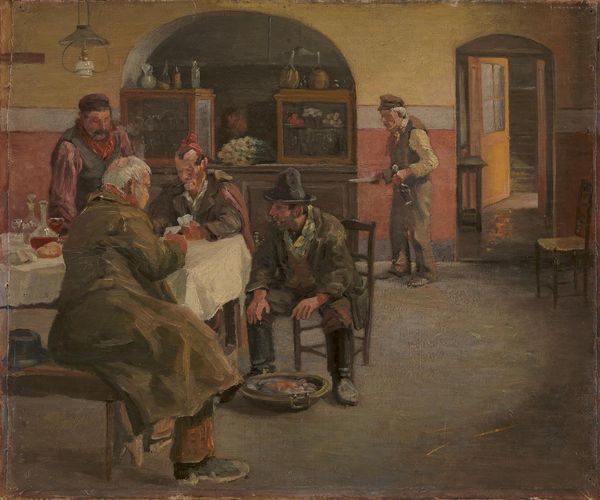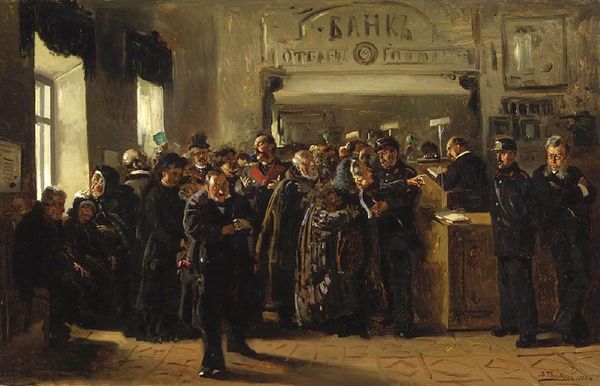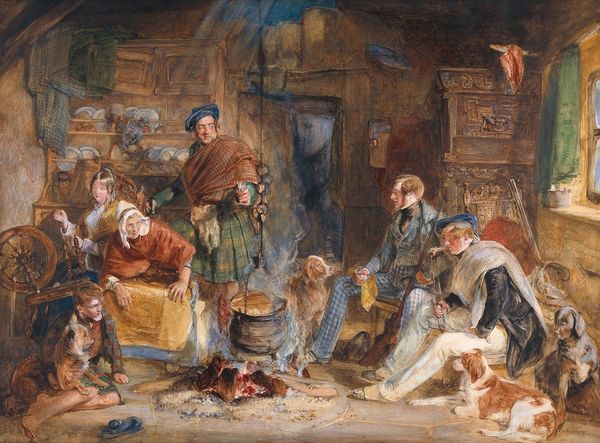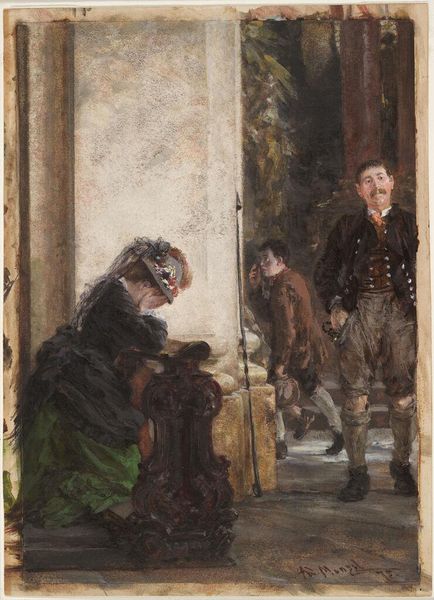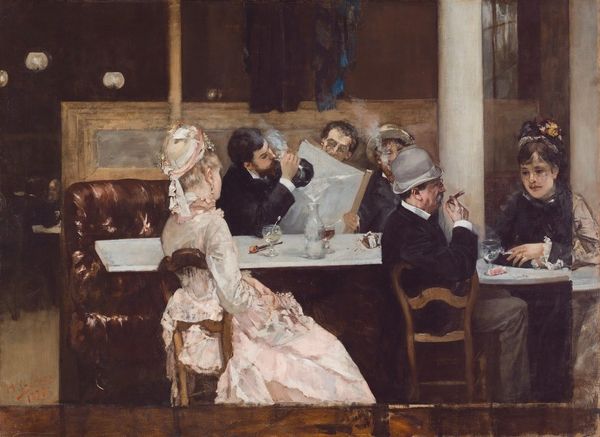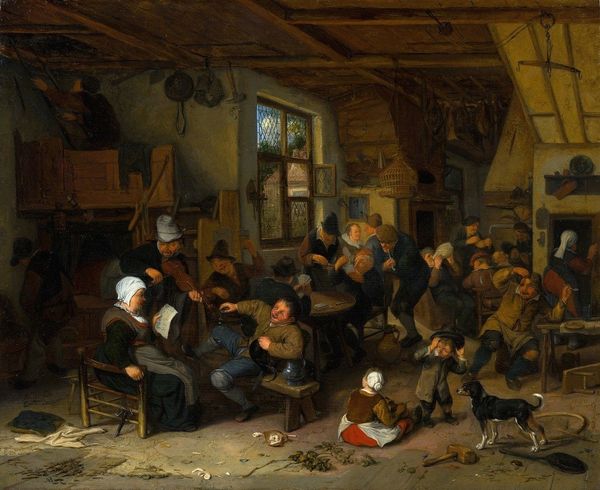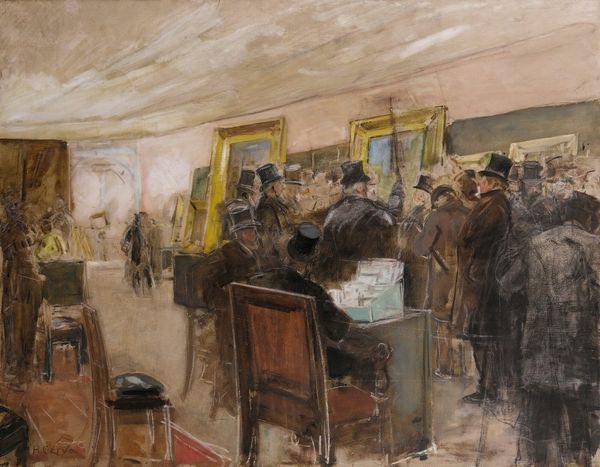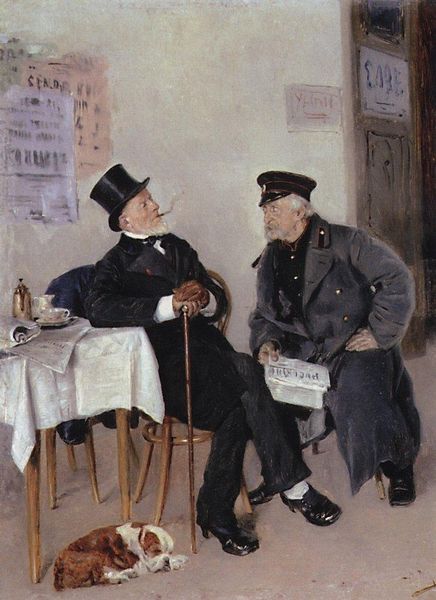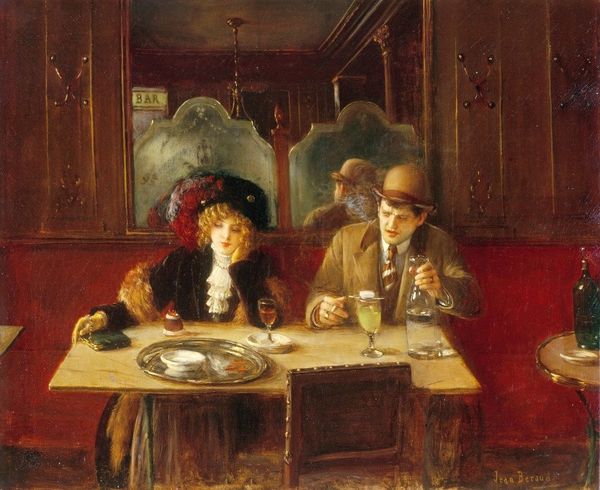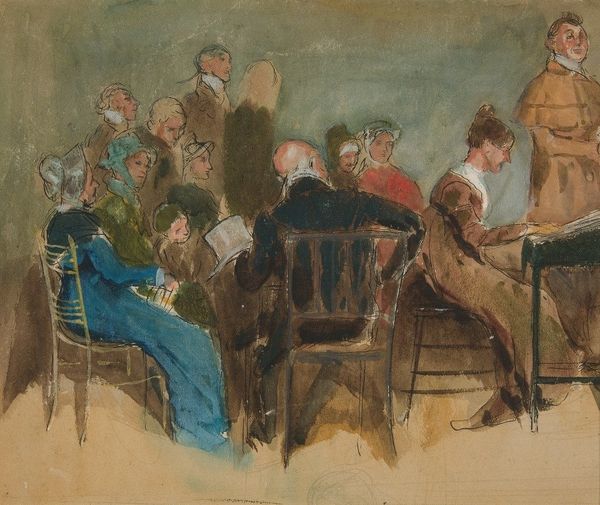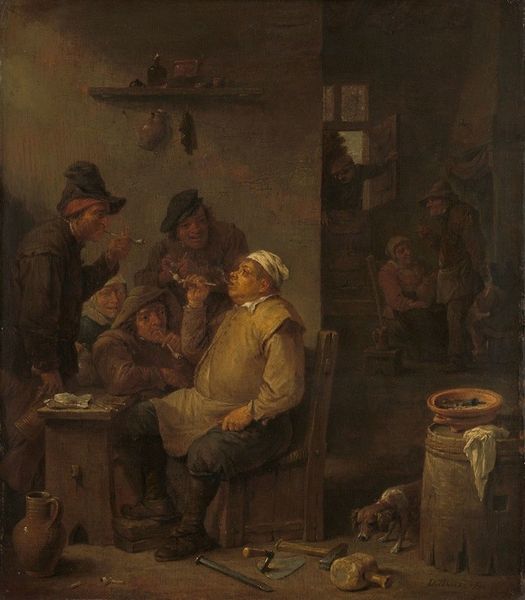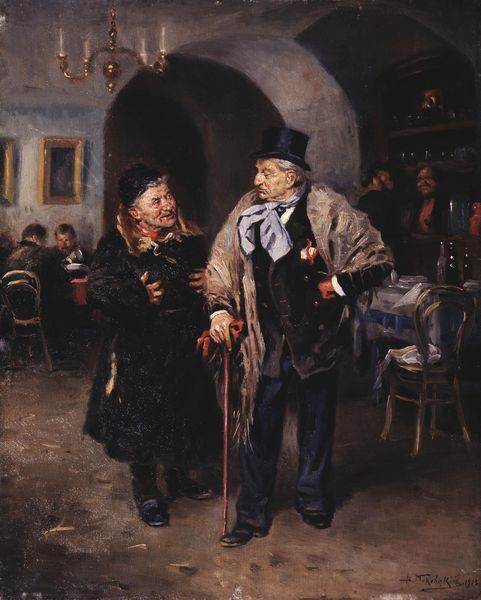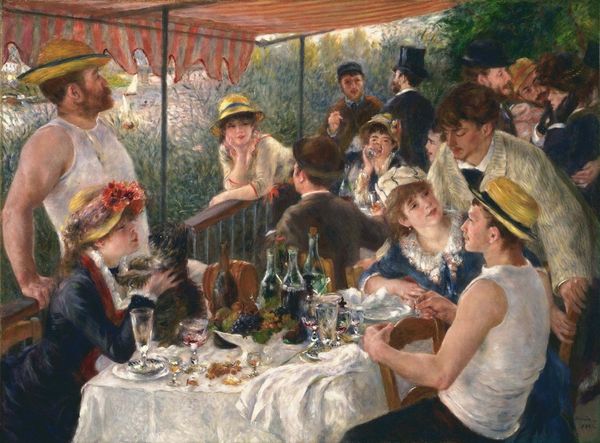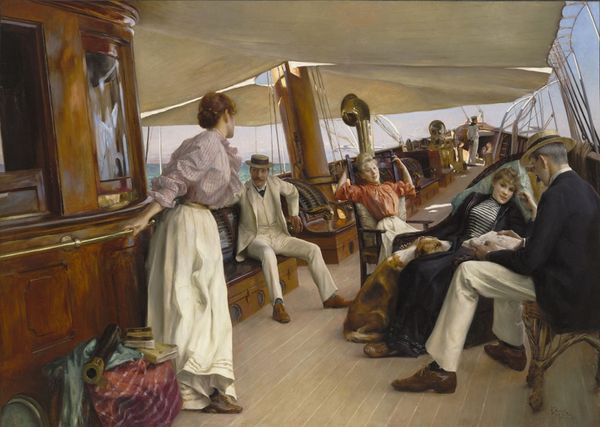
painting, oil-paint
#
portrait
#
painting
#
oil-paint
#
oil painting
#
group-portraits
#
genre-painting
#
portrait art
#
modernism
#
realism
Dimensions: 34 x 43 cm
Copyright: Public domain
Curator: Vladimir Makovsky painted "At Dominic's" in 1910, capturing a snapshot of Russian society bustling within a cafe. My first thought: this scene is alive! I feel as if I can hear the murmur of conversations and clinking of glasses. There's almost a photographic realness to the composition. Editor: Right, and I notice right away how this “realness” hinges on material details. The crisp white linens stark against the dark wood furniture, the texture of oil paint meticulously applied to render the glossy shine of a well-worn boot. It's all about depicting status and labor in equal measure. Curator: Status for sure—there’s an evident class divide. These gentlemen in their finery are quite removed from the waiting staff who literally serve their comfort. Editor: Precisely! And even within the elite we see subtle signifiers, don't we? The newspaper casually held is surely a tool of commerce, perhaps revealing someone leveraging the social setting for networking. Let's consider the production involved - from the papermaking and printing processes to the very labor of news distribution itself. Curator: That reading transforms this cafe into more than just a social space, more than idle recreation. It's also about how these newspapers became central, really essential to the economic lives of everyone represented in the picture, whether they read it themselves or not. What gets my imagination soaring is to wonder about their conversations! The one man, leaning with an attentive ear--is he hearing financial secrets? Personal gossip? Editor: Or is he performing attention, trying to insert himself in their social sphere? Notice the heavy impasto, building texture to evoke those starched collars, expensive wool suits – and how such finery necessarily dictates codes of conduct. It’s no accident those attending waiters’ black uniforms keep them in shadow. Curator: You see this canvas primarily through layers of socioeconomic fabric. I find myself pondering individual narratives woven by Makovsky... He invites us into the moment, but there’s an enduring quality as well. Do you suppose it makes it timeless? Editor: I wouldn't call it 'timeless'. Rather, Makovsky's keen focus on the real mechanics of the time gives it immense period value. The tangible and financial give the painting life—then, and even now.
Comments
No comments
Be the first to comment and join the conversation on the ultimate creative platform.
